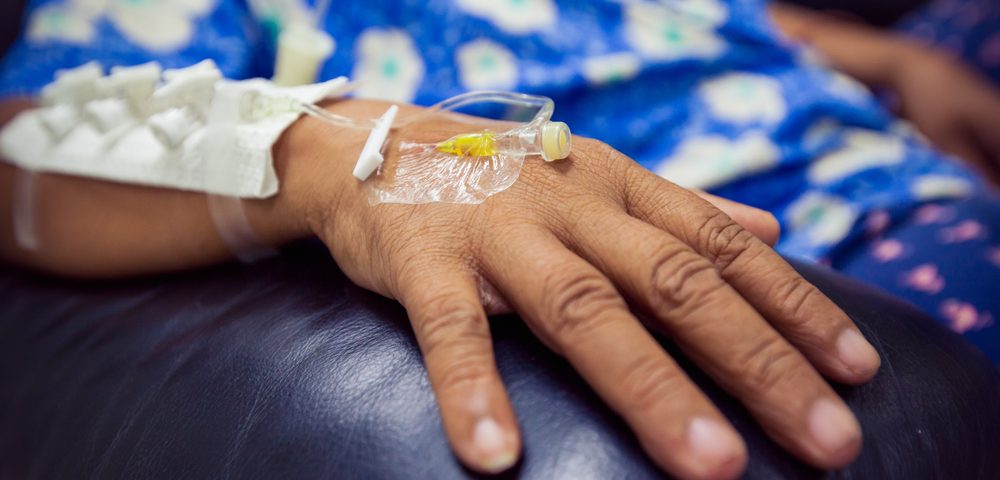Immunochemotherapy with high-dose cytarabine followed by autologous hematopoietic stem cell transplant (ASCT) should be considered the standard of care for people with mantle cell lymphoma ages 65 or younger, according to the results of a Phase 3 trial. The trial showed that including high-dose cytarabine prior to ASCT more than doubled the time to treatment failure, compared to the current standard known as R-CHOP (rituximab with cyclophosphamide, doxorubicin, vincristine, and prednisone).
A study of the trial’s results, “Addition of high-dose cytarabine to immunochemotherapy before autologous stem-cell transplantation in patients aged 65 years or younger with mantle cell lymphoma (MCL Younger): a randomised, open-label, phase 3 trial of the European Mantle Cell Lymphoma Network,” was published in The Lancet.
The median overall survival (OS) for mantle cell lymphoma has doubled in the past three decades, but it is still an incurable disease with a median OS of four to five years. A decade ago, results from a meta-analysis revealed that adding rituximab, a monoclonal antibody that targets the CD20 protein at the surface of the lymphoma cells, to conventional chemotherapy (CHOP) improved patients’ overall survival. However, only half of patients showed complete responses to treatment and time to treatment failure remained shorter than two years. Later, researchers showed that ASCT following immunochemotherapy significantly improved overall survival and increased the remission rates.
Recently, a Phase 2 study suggested that adding dexamethasone, high-dose cytarabine, and cisplatin (DHAP) to CHOP and ASCT could greatly improve overall response rate and overall survival of these patients.
The European Mantle Cell Lymphoma Network subsequently conducted a randomized, open-label, multicenter trial (NCT00209222), where the benefits of adding high-dose cytarabine to patients’ treatment were assessed.
The study enrolled patients with untreated stage II to stage IV mantle cell lymphoma, ages 65 years or younger. Among the 497 patients, 234 were randomly assigned as a control group to receive six cycles of R-CHOP, followed by myeloablative radiochemotherapy and ASCT, and another 232 were assigned to receive six courses of alternating R-CHOP and R-DHAP, followed by a high-dose cytarabine-containing conditioning regimen and ASCT.
The study’s primary outcome was time to treatment failure, and secondary endpoints included complete remission rate, overall response rate, progression-free survival, OS, and adverse events.
After a median follow-up of 6.1 years, 143 patients in the control group had failed treatment, whereas only 85 patients in the cytarabine group had failed. Results revealed that the cytarabine group had a median time to treatment failure of 9.1 years versus 3.9 years in the control group. Complete remission and median progression-free survival were also higher in the cytarabine group.
However, overall response rate was similar in both groups, and cytarabine was associated with higher incidence of grade 1 or grade 2 renal toxicity and higher grade 3 or worse hematological toxicity. Overall survival also did not significantly differ between the control and cytarabine groups.
“By almost all measures, the trial was a success,” Peter Martin, MD, anassociate professor of medicine at Weill Cornell Medicine and an associate attending physician at NewYork–Presbyterian Hospital, wrote in an accompanying editorial. “But a lingering question remains: Why was there no difference in survival? Despite a doubling of the median time to treatment failure, 5-year OS was similar in the two groups.”
However, he added that studies that assess overall survival but take too long may have feasibility issues and be irrelevant. “Treatments that improve response depth or duration but not survival might have value that is not immediately apparent, but results must be assessed in the context of toxicity and effect on subsequent therapies,” he concluded.


